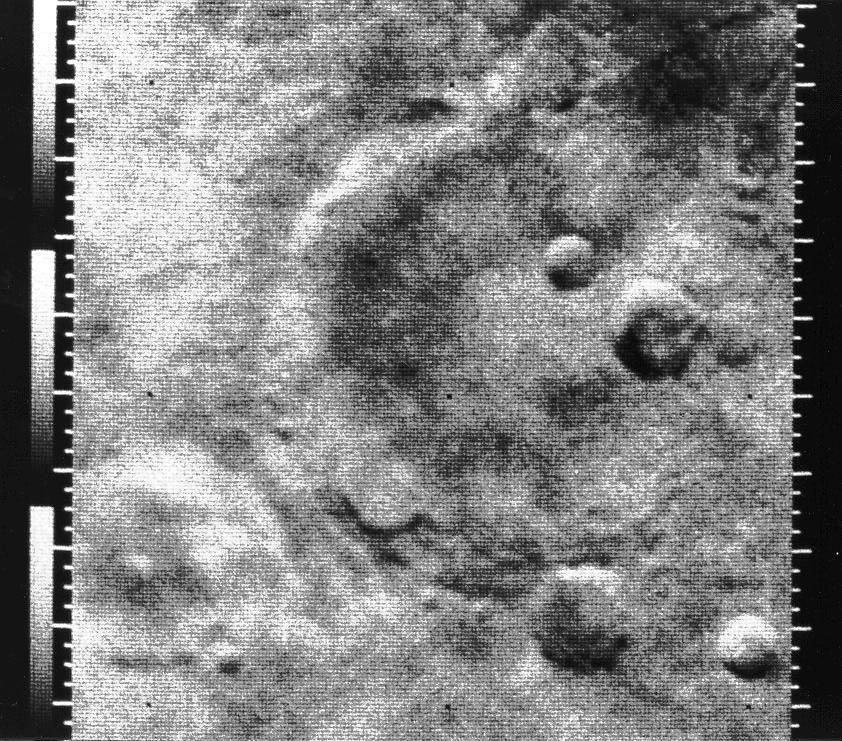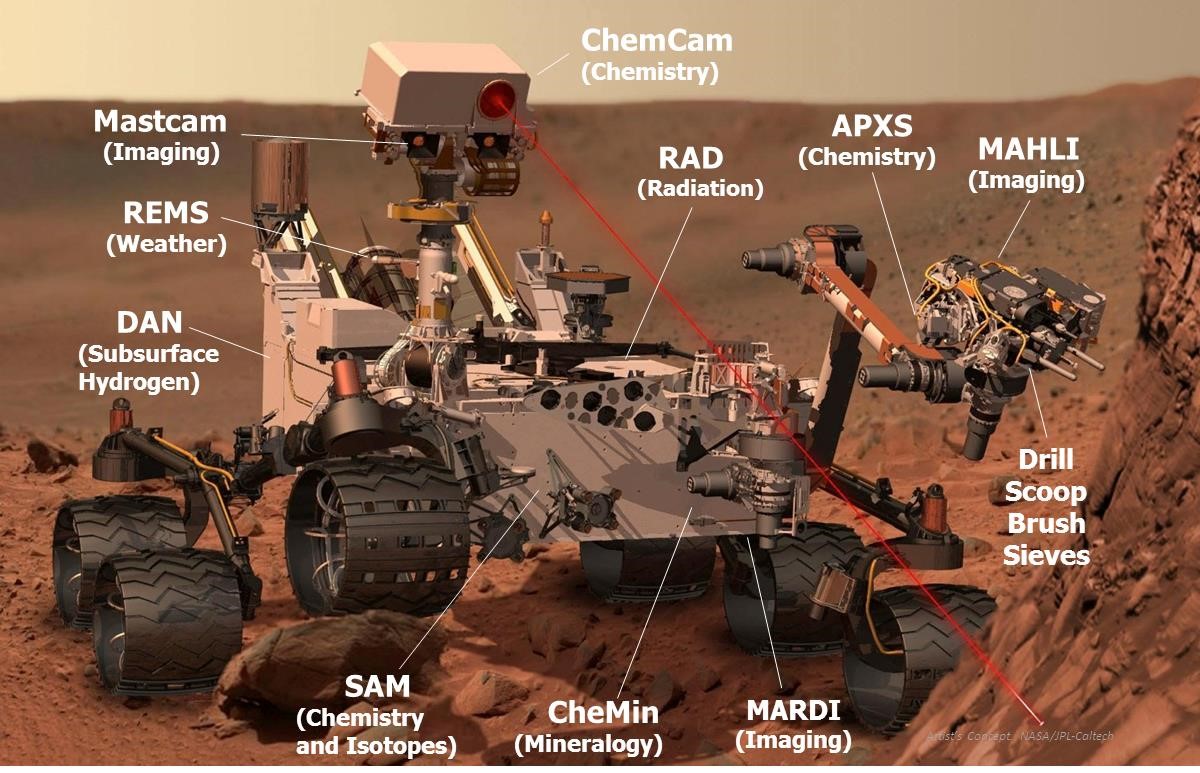I’m old enough to remember being completely awed by the low resolution black and white images beamed back to Earth from Mars in 1965. The Mariner 4 spacecraft performed the first successful flyby mission that produced images from deep space. The first such image showing the planet’s limb looks laughably crude today, and even the clearest view of a cratered surface resolves details only no smaller than roughly a mile across.
https://encrypted-tbn0.gstatic.com/images?q=tbn:ANd9GcSr8j_L2m0jl_MpZK_fTbnHtgJvL5XDdSHOro8vmWwDOj1A-scX

http://darkroom-cdn.s3.amazonaws.com/2015/07/July-14-1965-Mariner-4.jpeg
Compare that to images returned by high resolution cameras in orbit around Mars today.

https://astrogeology.usgs.gov/cache/images/0ca432c0985e3ae6debc6efc9f1e047b_HiRISE_bosporos_planum_crater.jpg
Or from rovers on the Mars surface.

https://www.nasa.gov/sites/default/files/styles/full_width_feature/public/thumbnails/image/pia21718.jpg
Or even from the farthest reaches of the solar system, as in this picture from the recent encounter with 2014 MU69.

https://upload.wikimedia.org/wikipedia/commons/f/ff/UltimaThule-NewHorizons-20190222.png
But here’s the question. How do these images get back to Earth? Therein lies a tale.
MARS CALLING
Let’s take the Curiosity rover currently operating in Gale Crater on the Martian surface. The Mars surface picture above is from one of the two cameras mounted on a mast about 6 ½ feet above the surface and are therefore called MASTCAMs.

https://www.universetoday.com/wp-content/uploads/2016/12/Curiosity-8.jpg
These are remarkably similar to a digital camera you might carry in your pocket for a weekend trip. They can take true color pictures at 1600 x 1200 pixel resolution, and video at slightly lower resolution. The images are stored in an on board memory that can hold over 5000 images. Nothing out of the ordinary here except for the location of the imaging system. It’s the means by which they get to your computer screen that gets interesting.
A quick lesson in radio communication, with two important parameters involved: power and frequency. Greater power means it’s easier to pick up the signal, which is why as a teenager I could hear a 50,000-watt Little Rock radio station wherever I went in Arkansas, and my local 1000-watt station faded out a few miles out of town.
Frequency is a bit different. Higher frequency allows you to encode more information within the electromagnetic wave, leading to a greater bit rate (rate of information transmission).

http://faculty.cord.edu/manning/physics215/studentpages/high%20frequency.gif
The Curiosity rover is capable of communicating directly with Earth, but it has only so much power to do so. What it usually does instead is to transmit to either of two Mars orbiters, which then pass the signal on to Earth receiving stations.
These orbiters (Mars Reconnaissance Orbiter [MRO] and Mars Odyssey) are only within range of the rover for short periods each day, for a total of about 16 minutes. Curiosity sends a UHF (ultra high frequency) signal, roughly 400 MHz (For comparison, your favorite FM radio station broadcasts at somewhere around 100 MHz.) up to its selected orbiter. This can occur as fast as 2 million bits per second for the more capable MRO, and at this rate a full color 1600 x 1200 pixel image can be transmitted in less than three seconds.
The MRO is the best equipped spacecraft for deep space communication ever built. It has a 3 meter antenna for transmitting data to Earth. It does so using the standard frequency for spacecraft, the so-called X-band, at 8 GHz.

https://upload.wikimedia.org/wikipedia/commons/thumb/7/7d/Mars_Reconnaissance_Orbiter_HGA.jpg/800px-Mars_Reconnaissance_Orbiter_HGA.jpg
Although this higher frequency should allow for faster data transmission, generally the rate from MRO to Earth is not much faster than from Curiosity to MRO. Mostly this is because of the greater distance, which reduces the signal strength and makes it harder to distinguish from background noise. But on the other hand, MRO has over 200 square feet of solar panels that generate about 2000 watts of power. That lets you send a strong signal!

https://marsmobile.jpl.nasa.gov/mro/images/PIA07245_200609062-fi.jpg
Back on Earth, it is the Deep Space Network (DSN) that receives these incredibly weak signals. Weak? But I thought you just said they were strong. They start off strong at Mars, but by the time they arrive at Earth, 40 million miles away at its closest, they require large and sensitive radio dish antennas to receive them.

https://upload.wikimedia.org/wikipedia/commons/thumb/e/e4/Goldstone_DSN_antenna.jpg/1280px-Goldstone_DSN_antenna.jpg
There are three locations for each complex of DSN antennas, the largest of which are 70 meters (230 feet) in diameter. These are equally spaced around the globe—in Goldstone California, Madrid Spain, and Canberra Australia—so that any spacecraft more than 30,000 kilometers (roughly 19,000 miles) from Earth is always in view of one of the three complexes.

https://upload.wikimedia.org/wikipedia/commons/thumb/3/31/DSNantenna.svg/1280px-DSNantenna.svg.png
You can watch the status of all three stations in real time, and the spacecraft they are monitoring, at this site. As I type this, the Madrid station is communicating with the Mars Odyssey spacecraft in orbit around Mars, the Goldstone station with the Japanese Hayabusa-2 spacecraft orbiting a small asteroid from which it hopes to return a sample, and the Canberra station is receiving data from the Juno spacecraft orbiting Jupiter. The lines are humming!



Leave a Reply